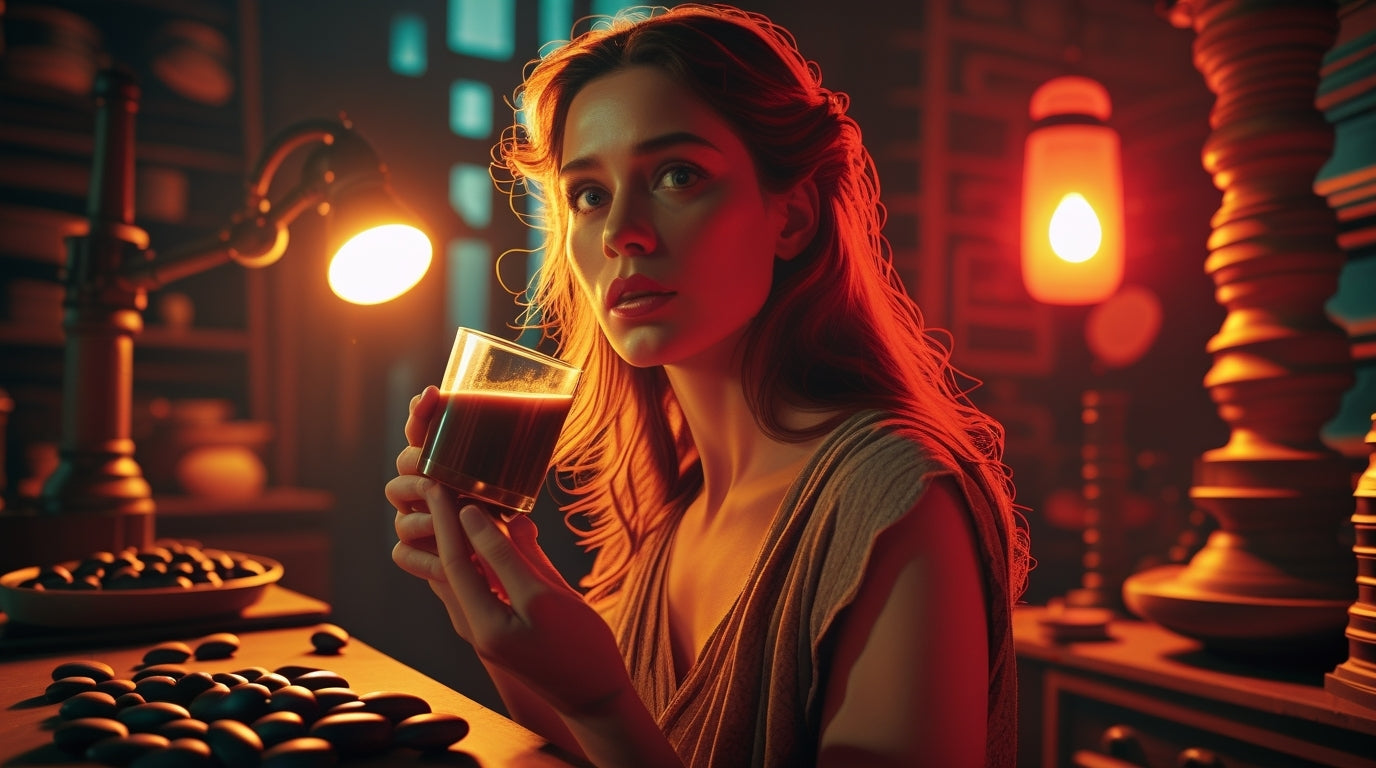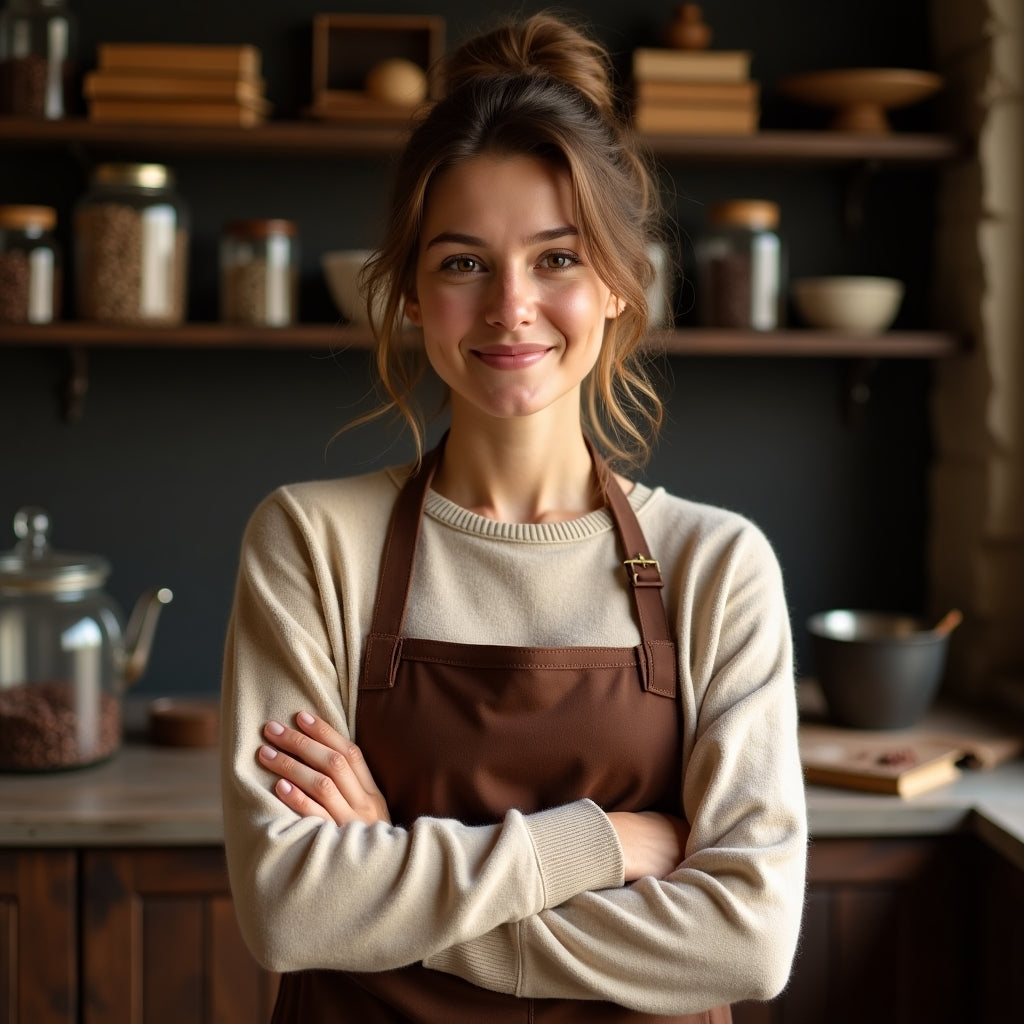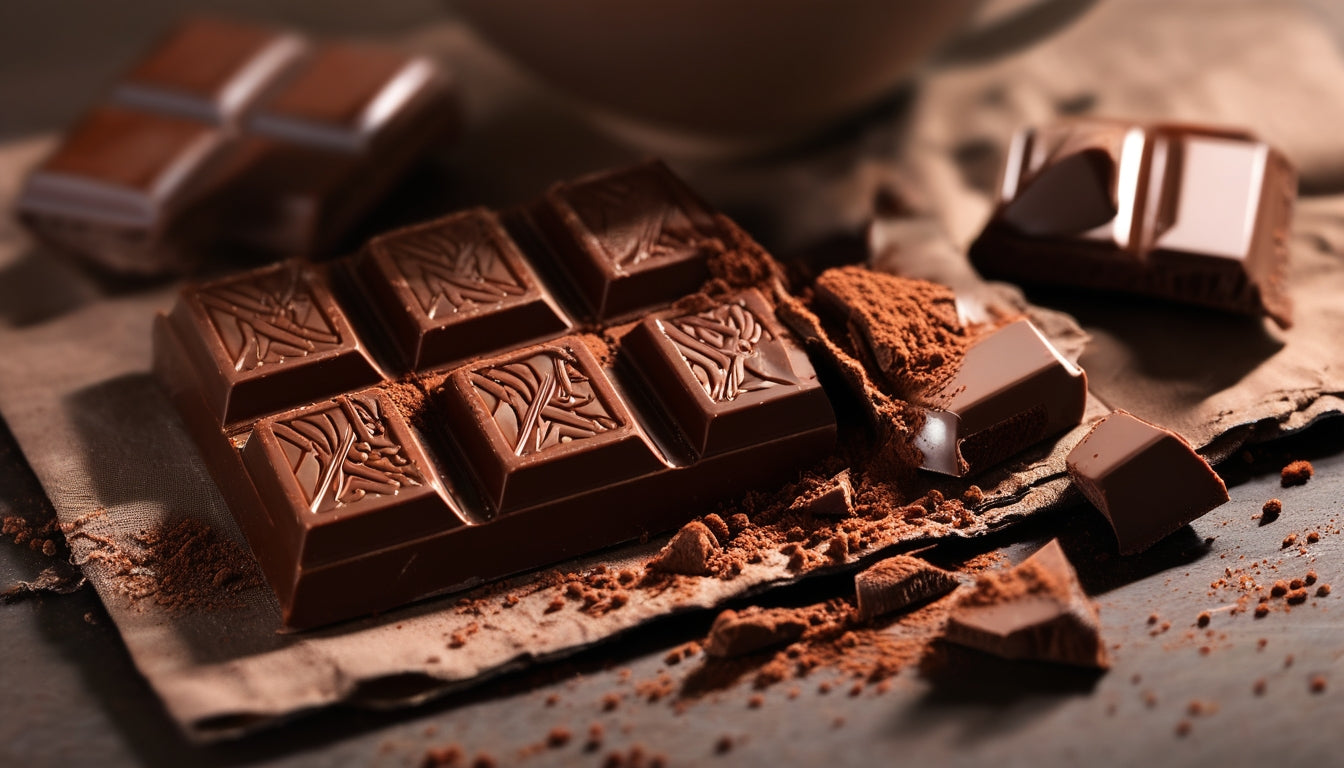
The Rich History of Chocolate: From Sacred Ritual to Conscious Indulgence
Chocolate holds a special place in our hearts and on our palates. This beloved treat has captivated humanity for thousands of years, transforming from a sacred beverage of ancient civilizations to the diverse array of confections we enjoy today. At Coracao Confections, we honor this rich history while moving chocolate forward into a more conscious future. Join us on a journey through time as we explore chocolate's fascinating evolution and how it shapes our approach to creating exceptional chocolate experiences.
Ancient Beginnings: The Sacred Cacao
The story of chocolate begins over 5,000 years ago in the tropical rainforests of Central and South America. Recent archaeological evidence suggests that cacao was first domesticated around 3300 BCE in present-day Ecuador by the Mayo-Chinchipe culture, before making its way to Mesoamerica where it would become deeply woven into the fabric of several ancient civilizations.
The Olmec Legacy
The Olmec civilization, flourishing in southern Mexico from 1500 BCE to 400 BCE, is believed to be the first to cultivate cacao for consumption. Though they left no written records about their use of cacao, archaeological discoveries have found traces of theobromine—a compound found in cacao—in their pottery vessels, suggesting they consumed cacao in some form, likely as a drink.
Maya: Chocolate as Currency and Communion
The Maya civilization, which peaked between 250 and 900 CE, elevated cacao to new heights of cultural significance. For the Maya, cacao was not just food but a gift from the gods. They used the beans as currency, with records showing that a turkey could be purchased for 100 cacao beans.
The Maya prepared cacao as a sacred beverage called "xocolatl" (from which we get the word "chocolate"). Unlike the sweet chocolate we know today, this drink was bitter and often spiced with chili peppers, vanilla, and other local flavorings. The frothy consistency—achieved by pouring the mixture from one vessel to another at a height—was particularly prized.
Cacao was central to Mayan religious ceremonies, social gatherings, and rites of passage. Drinking vessels specifically designed for chocolate consumption have been found in many Mayan tombs, underscoring the beverage's importance in both life and death.
Aztec Empire: Chocolate Reaches New Heights
By the time the Aztec Empire rose to prominence in the 14th century, cacao had become even more revered. The Aztecs, who lived in highlands where cacao couldn't grow, obtained beans through trade and tribute from conquered regions.
The Aztec ruler Montezuma II was said to drink dozens of cups of xocolatl daily, believing it to be an aphrodisiac and source of wisdom. While this account may be exaggerated, it reflects chocolate's elevated status within Aztec society. The Aztecs also continued and expanded the Maya practice of using cacao beans as currency, creating a standardized system where cacao functioned as money throughout their empire.
For the Aztecs, cacao was closely associated with their god Quetzalcoatl, who, according to legend, brought the cacao tree from paradise as a gift to humans. This divine connection enhanced chocolate's already special status.
The European Revolution: From Medicine to Luxury
When Spanish conquistadors arrived in Mesoamerica in the early 16th century, they encountered cacao and initially found its bitter taste unpalatable. However, they couldn't ignore its cultural and economic importance.
Spanish Introduction and Transformation
In 1519, Hernán Cortés encountered cacao when he met Montezuma II. Intrigued by the Aztec ruler's dedication to the beverage, Cortés brought cacao beans back to Spain. The Spanish made a crucial modification to the traditional preparation: they added cane sugar and spices like cinnamon and vanilla to make the bitter drink more appealing to European tastes.
Throughout the 16th century, chocolate remained primarily a medicinal drink in Spain, prescribed for various ailments from fever to heart problems. By the early 17th century, sweetened chocolate had become a fashionable drink among Spanish nobility, and its popularity began to spread to other European courts.
Chocolate Spreads Across Europe
Chocolate's journey across Europe was gradual but unstoppable:
- By the 1640s, it had reached France, particularly popular in Louis XIV's court
- Italian chocolatiers began experimenting with the substance in the 1600s
- England established "chocolate houses" in the 1650s as social gathering places rivaling coffee houses
- By the early 18th century, chocolate had spread to Germany and other central European nations
During this period, chocolate remained a luxury that only the wealthy could afford. The labor-intensive process of transforming cacao beans into drinkable chocolate kept prices high and production limited.
Industrial Revolution: Democratizing Chocolate
The 18th and 19th centuries brought revolutionary changes to chocolate production that would transform it from an elite indulgence to a widely available treat.
Van Houten's Game-Changing Press
In 1828, Dutch chemist Coenraad van Houten patented a hydraulic press that could separate cocoa butter from roasted cacao beans, leaving behind a cake that could be pulverized into cocoa powder. Van Houten also developed the process known as "Dutching"—treating cacao with alkaline salts to reduce bitterness and improve solubility in water.
These innovations were transformative. The resulting powder was easier to mix with water and had a more consistent flavor. More importantly, the extracted cocoa butter could be recombined with cocoa powder and sugar to create solid eating chocolate with a superior taste and texture.
The First Chocolate Bars
Building on van Houten's innovations, British chocolate maker Joseph Fry made a crucial discovery in 1847. By adding melted cocoa butter back into Dutch-processed cocoa, he created a paste that could be molded into what is considered the first chocolate bar designed for eating rather than drinking.

Other pioneers soon followed:
- In 1875, Swiss chocolatier Daniel Peter created the first milk chocolate by combining chocolate with the newly invented powdered milk
- In 1879, another Swiss chocolate maker, Rodolphe Lindt, developed the conching process, which refined chocolate particles and distributed cocoa butter evenly throughout the mixture, creating smoother, melt-in-your-mouth chocolate
- Companies like Cadbury, Nestlé, and later Hershey scaled up production, making chocolate increasingly affordable
By the early 20th century, chocolate had completed its remarkable transformation from an exclusive, ceremonial beverage to an everyday treat enjoyed by people of all social classes around the world.
The Modern Chocolate Renaissance: Quality, Ethics, and Craft
While the 20th century saw the explosive growth of mass-produced commercial chocolate, recent decades have witnessed a return to chocolate's roots, with a renewed focus on quality, craft, and consciousness.
The Rise of Bean-to-Bar Chocolate
Beginning in the late 1990s and accelerating in the 2000s, a new movement emerged in chocolate making—the bean-to-bar approach. Pioneering craft chocolate makers began working directly with cacao farmers, paying premium prices for high-quality beans, and controlling every step of the chocolate-making process from the raw cacao bean to the finished bar.
This movement has revolutionized chocolate by:
- Highlighting the distinct flavor profiles of different cacao origins and varietals
- Bringing attention to ethical issues in cacao farming
- Reviving traditional methods while embracing innovative techniques
- Creating new markets for specialty cacao
The Coracao Approach: Honoring Tradition While Embracing Innovation
At Coracao Confections, we're proud to be part of this modern chocolate renaissance. Founded by chocolate enthusiasts who wanted to create treats that were both indulgent and aligned with values of health and sustainability, we've been crafting exceptional vegan chocolate since 2008.
Our approach bridges ancient traditions with contemporary consciousness:
Mindful Sourcing
Like the Maya and Aztecs who revered cacao, we recognize the sacred nature of this remarkable plant. We source our cacao from the Huallaga Valley in Peru, a region known for producing some of the world's finest criollo cacao.
We partner with Acopagro, a cooperative of more than 2,000 small organic cacao producers who practice regenerative farming. These partnerships ensure fair wages for farmers while protecting precious rainforest ecosystems—Acopagro manages the conservation of 108,000 acres of forest in the Huallaga region.
Pure Ingredients
While ancient Mesoamericans enjoyed cacao in its purest form, we've taken a similar approach with our ingredients list. Our chocolate contains:
- Organic cacao
- Coconut sugar (a low-glycemic natural sweetener)
- Organic cacao butter
- Natural flavorings like vanilla bean
- Himalayan crystal salt
What you won't find in our chocolate: dairy, soy, gluten, refined sugar, or artificial ingredients of any kind.
Craft Production
Like the skilled chocolatiers who refined chocolate-making techniques during the Industrial Revolution, we combine artisanal craftsmanship with innovative methods. Our small-batch production ensures careful attention to quality at every stage. Our 81% dark chocolate offers the intense flavor and antioxidant benefits of high-cacao chocolate while remaining smooth and accessible.
Ceremonial Connections
Drawing inspiration from chocolate's ceremonial origins, we also offer ceremonial cacao for those who wish to connect with cacao's traditional uses. This minimally processed cacao allows you to experience chocolate in a form closer to how it was consumed for thousands of years in ancient Mesoamerica.
The Future of Chocolate: Conscious Indulgence
As we look to the future, chocolate stands at a fascinating crossroads. Issues of sustainability, farmer equity, and health consciousness are reshaping the chocolate landscape.
At Coracao Confections, we believe the future of chocolate lies in what we call "conscious indulgence"—the idea that chocolate can be simultaneously:
- Delicious and satisfying
- Nutritionally beneficial
- Environmentally sustainable
- Socially responsible
- Accessible to diverse dietary needs
Our vegan chocolate truffles and bars embody this philosophy, offering exceptional flavor while upholding values of sustainability, health, and inclusivity.

Chocolate's Enduring Legacy
From the sacred vessels of the Maya to the carefully crafted creations of today's artisan chocolate makers, chocolate has maintained its special place in human culture. Its journey from bitter ceremonial drink to beloved global treat reflects our own evolution—our desire to preserve tradition while embracing innovation, to indulge while remaining mindful, to connect with ancient wisdom while creating new possibilities.
When you enjoy a piece of Coracao chocolate, you're participating in this remarkable story—a tale that spans millennia and continues to unfold. You're tasting not just exceptional chocolate but the culmination of thousands of years of human relationship with this extraordinary plant.
We invite you to savor the richness of chocolate's history in every bite, and to join us in writing its next chapter—one that honors the past while creating a more conscious, sustainable, and delicious future for chocolate lovers everywhere.

Claire Bennett
I'm Claire, a chocolate lover and artisan based in a small town where I run a tiny home kitchen dedicated to exploring everything chocolate. From single-origin dark bars to creamy ganache and handmade truffles, I find joy in working with all types of chocolate. I believe chocolate has a story, and I love bringing that story to life through humble, heartfelt creations.




Leave a comment
This site is protected by hCaptcha and the hCaptcha Privacy Policy and Terms of Service apply.